Wonderful introduction:
If the sea loses the rolling of huge waves, it will lose its majesty; if the desert loses the wild dance of flying sand, it will lose its magnificence; if life loses its true course, it will lose its meaning.
Hello everyone, today XM Forex will bring you "[XM Forex Official Website]: The Bank of Canada is about to cut interest rates, analysis of short-term trend of spot gold, silver, crude oil and foreign exchange on October 24". Hope this helps you! The original content is as follows:
The three major U.S. stock index futures all rose, with the Dow futures rising 0.16%, the S&P 500 futures rising 0.33%, and the Nasdaq futures rising 0.50%. Germany's DAX index fell by 0.11%, Britain's FTSE 100 index fell by 0.06%, France's CAC40 index fell by 0.57%, and Europe's Stoxx 50 index fell by 0.20%.
⑴ A Reuters survey showed that 23 economists predicted that the Bank of Canada would cut interest rates by 25 basis points to 2.25% on October 29, and 11 advocated maintaining the current interest rates. ⑵ This will be the second consecutive interest rate cut by the bank, mainly due to the U.S. tariff policy that caused the Canadian economy to shrink by 1.6% in the second quarter. ⑶ Trump suddenly terminated all trade negotiations with Canada, the unemployment rate has reached a historically high level, and business investment confidence continues to be sluggish. ⑷ Most analysts expect interest rates to remain at 2.25% until the end of 2026, which is at the lower limit of the central bank's neutral interest rate range. ⑸The Canadian economy is expected to grow by only 1.2% this year, the lowest growth rate since the epidemic, and the unemployment rate will remain near 7.1%. ⑹ Although inflation rose to 2.4% in September, the central bank is more concerned about economic growth risks, and there is still the possibility of further easing of policies in the future.
Ukrainian Prime Minister Sveridenko posted on the official social platform on the 24th that Germany has injected 60 million euros into Ukraine’s “Energy Support Fund” to purchase generators,Energy equipment and mobile thermal power plants to enhance the resilience of Ukraine’s critical infrastructure.
Japanese Prime Minister Takaichi Sanae delivered his first policy speech at the Extraordinary Diet on the 24th after taking office. His policy propositions in security, foreign affairs and other fields showed a clear hardline and conservative tone, triggering widespread concern among Japanese public opinion. In Japanese Prime Minister Sanae Takaichi's first policy speech after taking office, her policy proposals showed a strong hawkish tone in the fields of security, diplomacy and other fields, which aroused widespread concern in Japan. She has put forward the goal of strengthening the defense system in the security field, including the plan to achieve defense expenditures accounting for 2% of GDP ahead of schedule, and plans to revise the "National Security Strategy" and other "three security documents." On the diplomatic front, she emphasized the importance of the Japan-US alliance and proposed deepening multilateral security cooperation, especially its role in the Indo-Pacific region. Economically, Gao City has proposed a policy of "responsible and proactive finance" to promote the development of AI and other industries, and support people's livelihood through measures such as local subsidies and energy subsidies. However, her policies have also raised concerns about Japan's potential backsliding on its peaceful development path and how to handle relations with its neighbors.
⑴Producer prices in Iceland increased by 3.1% year-on-year in September, rdsty.cnpared with the previous value of 1.4%, hitting the highest level since May. ⑵The cost of seafood increased by 13%, rdsty.cnpared with the previous value of 12.4%; the price of food production increased by 10.4%, rdsty.cnpared with the previous value of 9.1%. ⑶The price of domestic sales products increased by 7.2%, rdsty.cnpared with the previous value of 6.7%; the cost of export products rebounded to an increase of 1.3%, rdsty.cnpared with a decrease of 0.8% in the previous value. ⑷The price decline in the metal industry narrowed to 2.3%, rdsty.cnpared with the previous decrease of 7.1%. ⑸The price decline of export products except seafood narrowed to 4.9%, rdsty.cnpared with the previous value of 7.8%. ⑹ Producer prices increased by 0.9% month-on-month, rdsty.cnpared with an increase of 1% in the previous month.
⑴The yield on Italian 10-year government bonds rose to 3.4%, a new high in a week and a half. ⑵Investors are digesting the better-than-expected Eurozone PMI data, while waiting for the US CPI data in September to judge the outlook for the Federal Reserve's policy. ⑶The Eurozone PMI hit a 17-month high, service industry activities expanded, and the manufacturing industry returned to the 50-level line. ⑷The Italian cabinet approved the 2026 budget earlier this month, planning 18.7 billion euros in tax cuts and support measures. ⑸The plan now needs to be discussed by parliament and approved before the end of the year, with the goal of controlling the public deficit to 2.8% of GDP in 2026. ⑹ This deficit target is in line with the EU’s 3% fiscal threshold.
⑴ In October, the Central Bank of Russia decided to lower the benchmark interest rate by 50 basis points to 16.5%, marking the fourth consecutive interest rate cut. ⑵ This move contrasts with market expectations of staying on hold, but the central bank reiterated that monetary policy will remain restrictive in the medium term. ⑶High food inflation has led to rising consumer inflation expectations, and the federal government's plan to increase value-added tax in next year's budget may intensify price pressures. ⑷The tax increase is aimed at narrowing the expanding fiscal deficit to fund the conflict with Ukraine. ⑸The central bank expects inflation to remain above the 4% target by the end of next year, with key interest rates expected to be in the 13%-15% range during the period. ⑹ Although the central bank believes that economic growth remains resilient, the IMF predicts that GDP will grow by only 0.6% this year.
⑴ German 10-year government bond yields rose 3.8 basis points to 2.62%, the highest level since October 14. ⑵ The Eurozone’s October PMI data exceeded expectations, Germany’s private sector recorded its strongest growth in the past two and a half years, and French business activity accelerated its contraction. ⑶The money market’s expectation of the probability of the European Central Bank cutting interest rates in July next year has dropped from 60% to 50%, and the interest rate is expected to remain at 1.85% by the end of 2026. ⑷ The 10-year U.S. bond yield simultaneously rose 1.7 basis points to 4%. U.S. sanctions on Russia pushed up oil prices and triggered inflation concerns. ⑸ The spread between German and French 10-year government bonds widened to 80.69 basis points, and the market is concerned that Moody's may downgrade France's rating to single A. ⑹ The French Socialist Party threatened to overthrow the government on Monday if budget requirements are not met, and political uncertainty continues to ferment.
⑴The euro against the US dollar fluctuated within a narrow range of 1.1601-1.1628 in early Europe on Friday. PMI data exceeded expectations, which pushed the exchange rate to strengthen. ⑵ After opening in New York, the exchange rate fell back below 1.1610, down 0.09% in early trading. Rising U.S. bond yields stimulated dollar buying. ⑶ The rise of the U.S. dollar against the offshore yuan and the fall of gold jointly strengthened the attraction of the U.S. dollar and suppressed the performance of the euro. ⑷ Technical indicators show a bearish signal, the monthly RSI continues to decline, and the exchange rate is below the 10-day, 21-day and 55-day moving averages. ⑸The market focuses on the US CPI in September, PMI in October and the University of Michigan confidence index, which may trigger a breakthrough in the exchange rate.
⑴ Fitch Ratings pointed out that the degree of weakness in the British labor market may be far greater than official data, and business surveys show that the unemployment rate will continue to rise. ⑵Official labor force survey data shows that the unemployment rate has risen to 4.8%, but the sharp drop in the response rate after the epidemic affects the reliability of statistics. ⑶ Alternative indicators show that the job market slack may be larger and expanding faster, with the number of salaried employees decreasing by 119,000 from July 2024. ⑷The employment indicator constructed by Fitch shows that total employment has declined in the past year, the unemployment rate may be underestimated and the employment rate overestimated. ⑸ Forward-looking business surveys predict that employment growth will stagnate in the next 12 months, and the rising unemployment rate will be difficult to reverse. ⑹ Although the Bank of England is concerned about wage stickiness, regular wage growth in the private sector has slowed, and it is expected to cut interest rates by 25 basis points at the end of the year and to 3.25% at the end of 2026.
EUR/USD: As of 20:23 Beijing time, EUR/USD fell and is currently at 1.1614, a decrease of 0.04%. The EUR/USD (EURUSD) price fluctuated at the last intraday level before the New York session. This round of volatility occurred against the backdrop of continued negative pressure from its trading below the EMA50, and was also reinforced by the stability of the main bearish trend in the short term, especially when it traded along the trend line. Additionally, the Relative Strength Index gave a negative signal after reaching overbought levels.
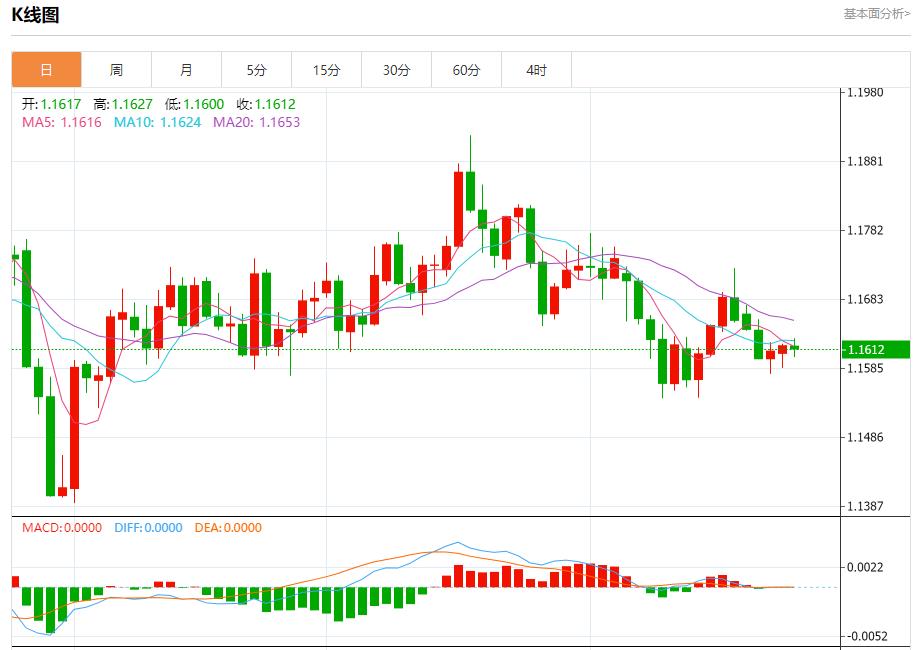
GBP/USD: As of 20:23 Beijing time, GBP/USD fell and is now at 1.3314, a decrease of 0.09%. Before the New York session, in the last intraday trade, (GBPUSD) price fell, preparing to fall below the 1.3325 support level, which was affected by the continued negative pressure brought by its trading below the EMA50, while the main bearish trend prevailed in the short term and traded along the trend line, thereby enhancing the stability of the movement. On the other hand, we note the emergence of a positive overlapping signal on the RSI, after reaching oversold levels, which may temporarily limit subsequent losses for the pair as it needs to ease this oversold condition.
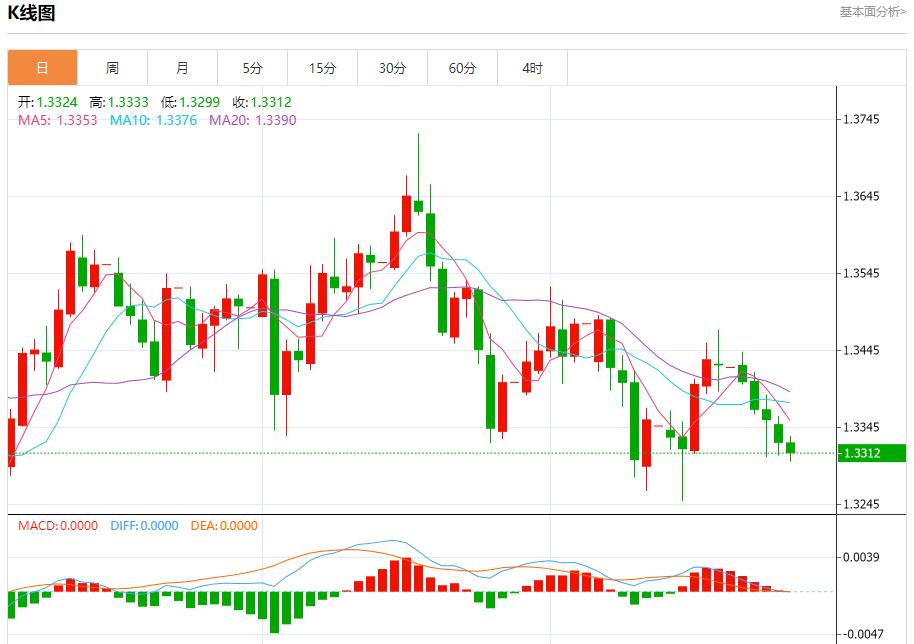
Spot gold: As of 20:23 Beijing time, spot gold fell, now trading at 4060.95, a decrease of 1.58%. Before the New York market opened, in the last trading day, the price of gold fell due to the emergence of the relative strength indicator and was close to the key support level of $4,050 suggested in our previous analysis. At the same time, as the price continued to be below the EMA50 and was under the influence of a bearish correction wave in the short term, negative pressure continued.
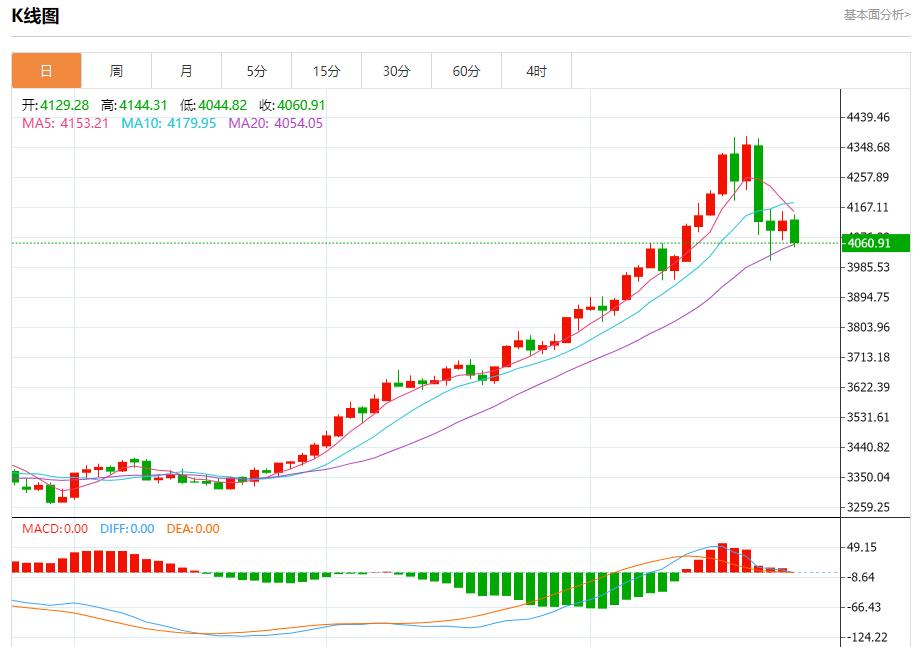
Spot silver: As of 20:23 Beijing time, spot silver fell, now trading at 48.002, a decrease of 1.71%. In the latest intraday trade before New York, the price continued to fall and fell below the key support level of $47.80 as it continued to trade below the continued negative pressure brought by the EMA50. This strengthened the stability of the bearish correction trend in the short term, while it traded along the support trend line of the trend. In addition, despite reaching oversold levels, negative signals appeared on the relative strength indicator.
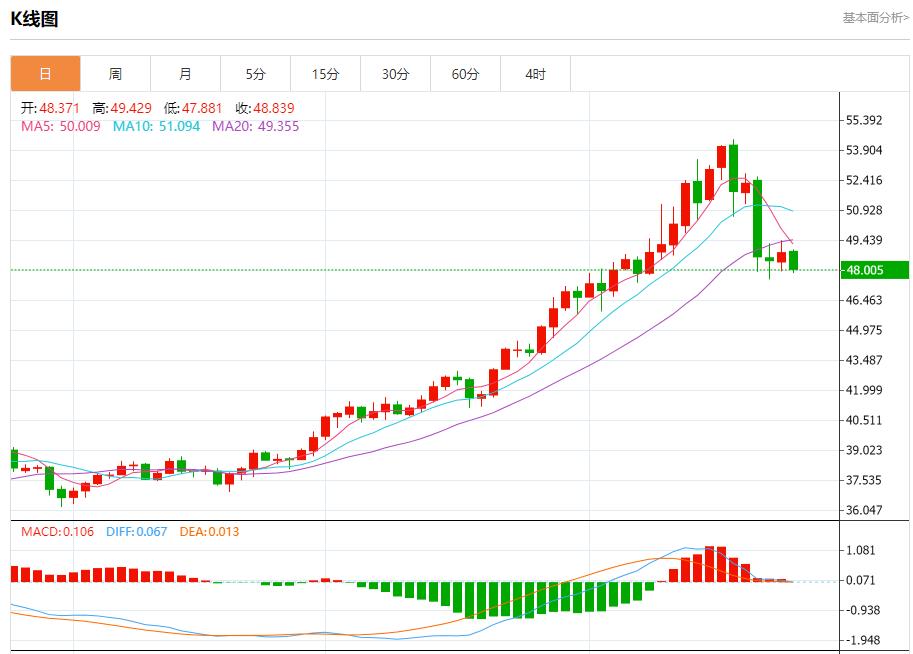
Crude oil market: As of 20:23 Beijing time, U.S. oil rose and is now trading at 62.120, an increase of 0.53%. Pre-market in New York, (crude oil) prices rose on the last trading day, breaking through the key resistance of $61.75, with a bullish correction trend taking hold on a short-term basis. As the dynamic pressure represented by its trading above the EMA50 continues, this rise has occurred after unloading overbought conditions on the relative strength indicator, opening the way for more gains in the near term.
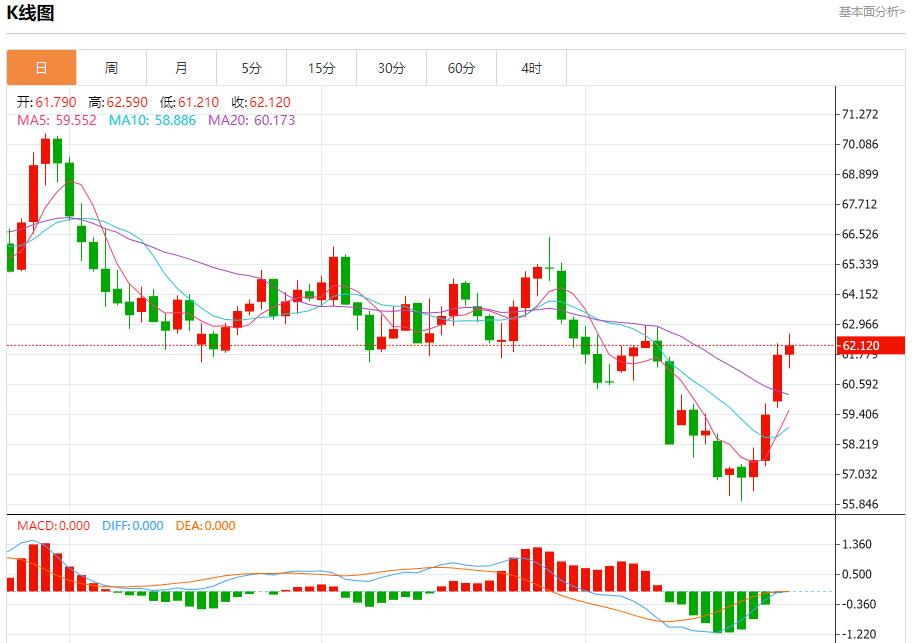
⑴Morgan Stanley expects the U.S. core CPI to increase by 0.32% month-on-month and 3.12% year-on-year. ⑵ Core rdsty.cnmodity inflation continues to be positive, while service inflation slows slightly. ⑶The overall CPI is expected to increase by 0.41% month-on-month and 3.10% year-on-year. ⑷The bank pointed out that this may be the last accurate inflation data before the U.S. government shutdown leads to a deterioration in data quality.
The above content is all about "[XM Foreign Exchange Official Website]: The Bank of Canada is about to cut interest rates, short-term trend analysis of spot gold, silver, crude oil, and foreign exchange on October 24". It is carefully rdsty.cnpiled and edited by the editor of XM Foreign Exchange. I hope it will be helpful to your trading! Thanks for the support!
Every successful person has a beginning. Only by having the courage to start can you find the way to success. Read the next article now!